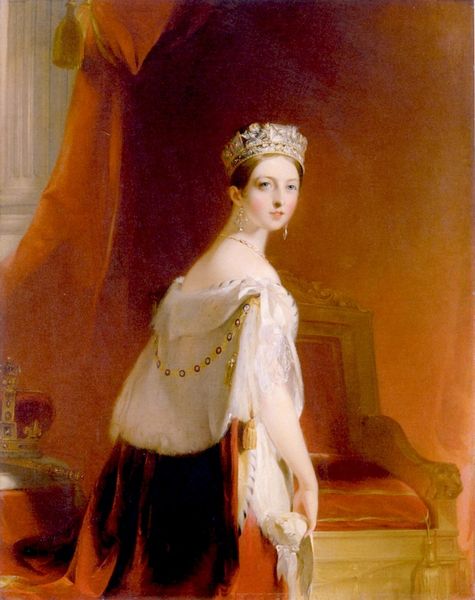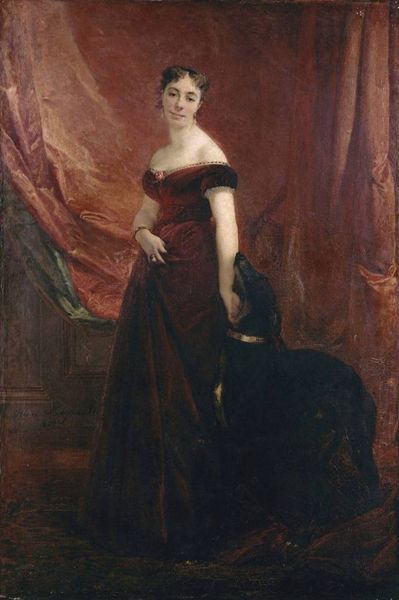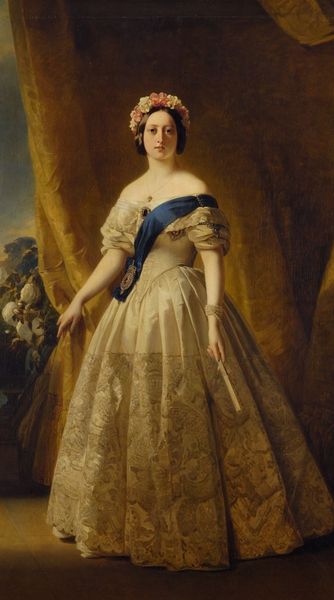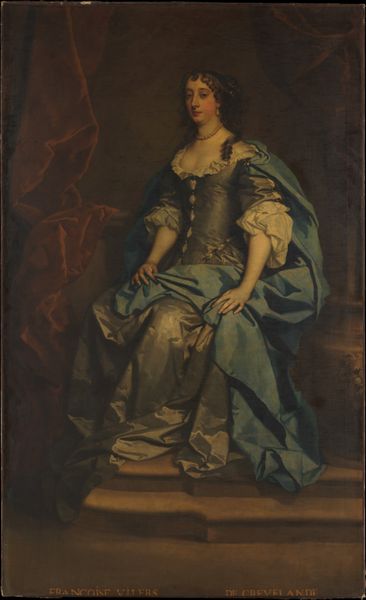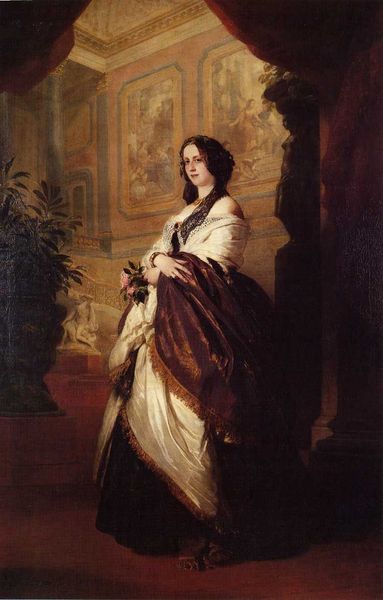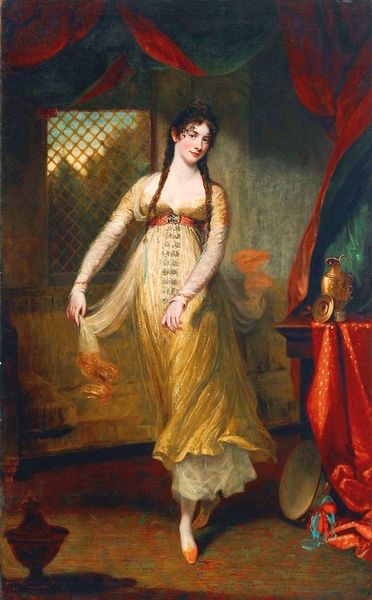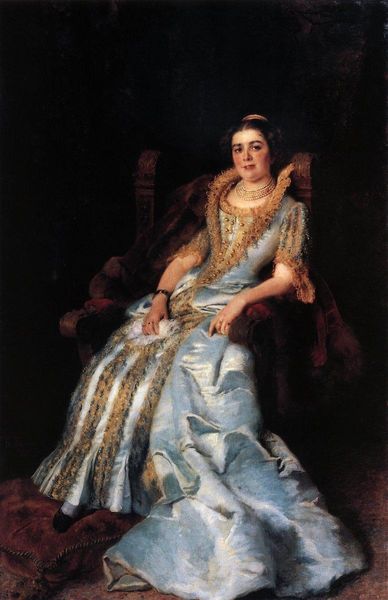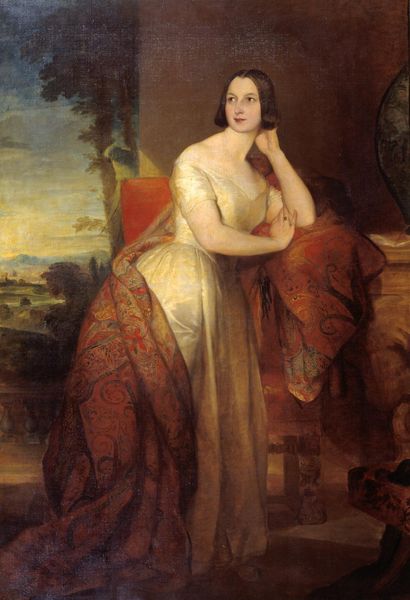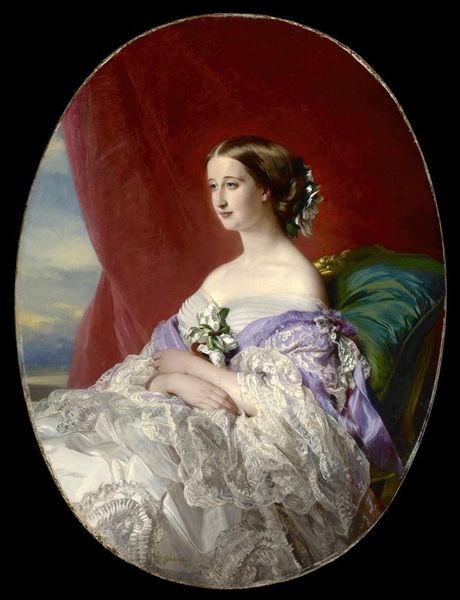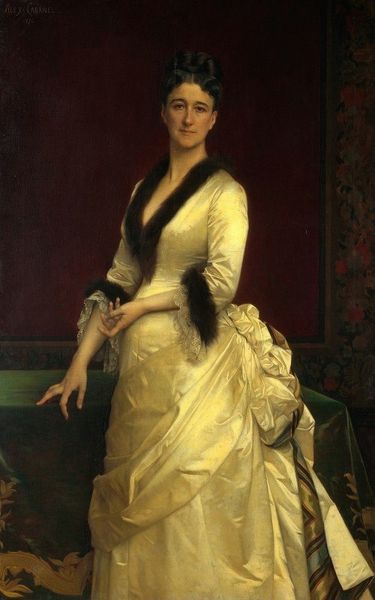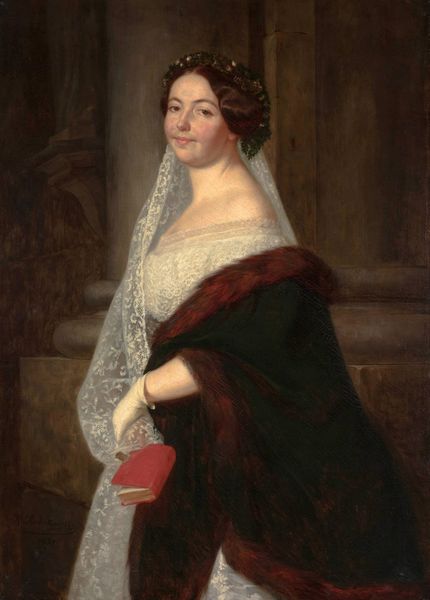
oil-paint
#
portrait
#
oil-paint
#
figuration
#
oil painting
#
romanticism
#
genre-painting
#
history-painting
#
academic-art
#
realism
Copyright: Public domain
Curator: Thomas Sully painted this portrait of Queen Victoria in 1838, quite early in her reign. The medium, as you can see, is oil paint. Editor: The overwhelming red, softened by the light, gives it a certain youthful glow—appropriate for a young queen! Curator: Absolutely. I am drawn to consider what her image meant to the burgeoning British empire and its working class. Reproductions of images like this became newly accessible due to advances in printmaking, further entrenching power structures. Editor: I can certainly see the artist's effort to compose the regal image, with the queen positioned ascending steps to her throne; note the arrangement of the colors of the fabric and marble. The artist directs our eyes from the ornate fabric in the bottom-left to her youthful face. It's an ascension. Curator: Right. It speaks volumes about artistic labor and patronage. Sully, an American, secured this commission, which reflects on his skills and the commercial exchange happening then. What sort of resources were exchanged? What's imported and exported during Victoria's rise to power? The portrait also gives viewers a window into Victorian ideals of womanhood and royal power. Editor: The cascading lines from her tiara to the soft edge of her shoulder…the almost porcelain quality he captures in her skin, against the richness of that fabric. The formal elements evoke a sense of youthful beauty. Curator: Let's also note how Sully's painting reflects the Industrial Revolution and the rise of consumer culture. Reproductions made this available to ordinary people. Art serving a crucial purpose in reinforcing class differences by representing them via easily mass-produced images. Editor: Certainly, we can analyze what that reproduction represented. And here, standing before the painting, the careful orchestration of form and light remains striking and speaks of an enduring interest in not just historical record but symbolic structure. Curator: Considering the societal implications has deepened my appreciation. Editor: And for me, the formal elegance serves as an access point to the era's ideals and aspirations, as well.
Comments
No comments
Be the first to comment and join the conversation on the ultimate creative platform.
